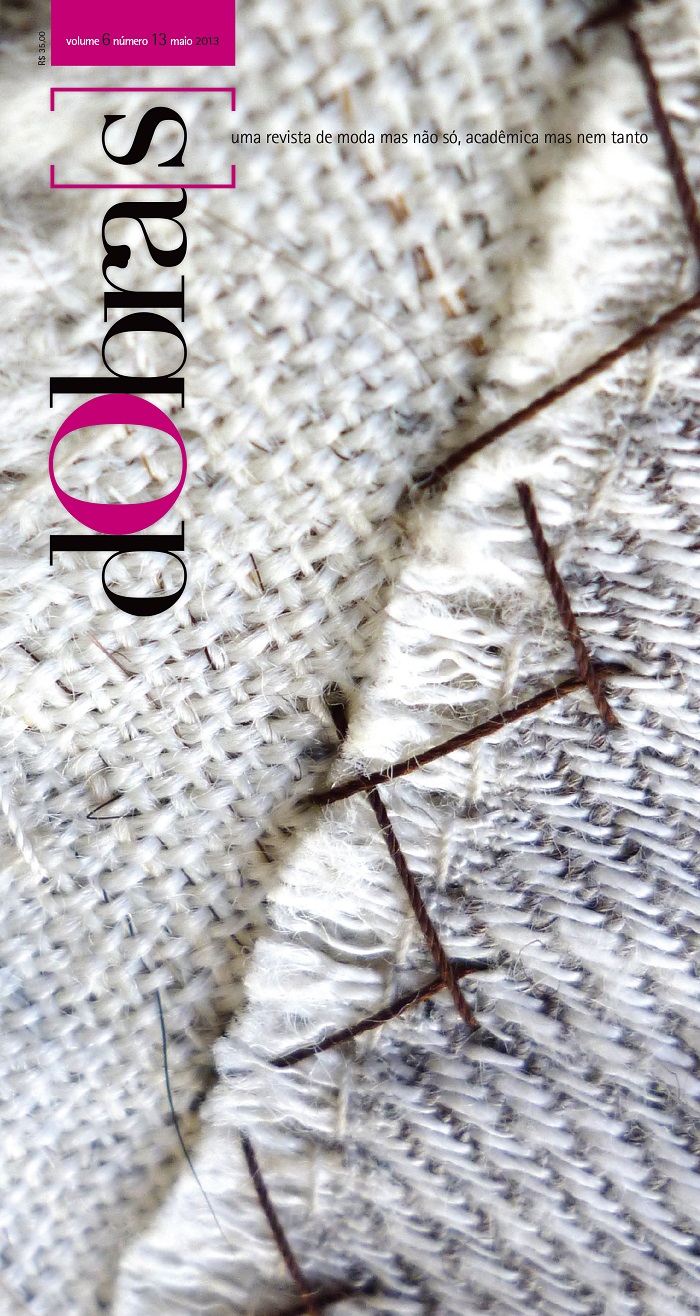O ciclo de vida dos quimonos e o mercado da beleza
DOI:
https://doi.org/10.26563/dobras.v6i13.138Palavras-chave:
corpo, beleza, quimono, cultura japonesa, moda japonesa.Resumo
A história dos quimonos no Japão não é o que parece à primeira vista. Está intimamente relacionada a diferentes redes de produção. Afinal, quimonos nunca foram definidos
como “aquilo que se veste”. Eles já representaram símbolos de sabedoria (para antigos monges), objetos de sedução (para delicadas gueixas), imagens-fetiche do exotismo (no cinema hollywoodiano) e produtos para exportação (no que se refere à economia japonesa). A história dos quimonos sempre foi uma história do corpo e da percepção da vida. É disso que trata este artigo. De uma roupa que veste o corpo, mas só existe na medida em que se alimenta de movimento e de imaginação.
Downloads
Referências
BHABHA, Homi K. O local da cultura. Belo Horizonte: UFMG, 2003.
DIDI-HUBERMAN, Georges. Sobrevivência dos vaga-lumes. Belo Horizonte: UFMG, 2011.
IKEGAMI, Eiko. Bonds of civility: aesthetic networks and the political originis of japanese culture. Cambridge: Cambridge University, 2005.
MILLER, Laura. Beauty up: exploring contemporary japanese body aesthetics. Berkeley: University of California, 2006. DOI: https://doi.org/10.1525/9780520938847
OKAKURA, Kakuzo. The ideals of the east: with special reference to the art of Japan. Reino Unido: Dodo Press, 2009.
SHUZÔ, Kuki. The structure of iki. Sydney: Power, 1979.
SILVERBERG, Miriam. Erotic, grotesque, nonsense: the mass culture of japanese modern times. Berkeley: University of California, 2009.
SÔSEKI, Natsume. Complete works. Tóquio: Iwanami Shoten, 1956, v. 2.
YAMAKAWA, Aki; ONO, Yoshihiro; BETHE, Monica. Transmitting robes, linking mind: the world of buddhist kasaya. Quioto: Museu Nacional de Quioto, 2010. Catálogo de exposição, 9 out.-23 nov. 2010, Museu Nacional de Quioto.










